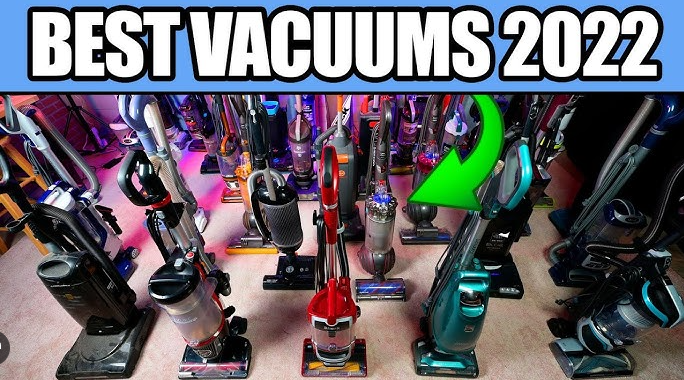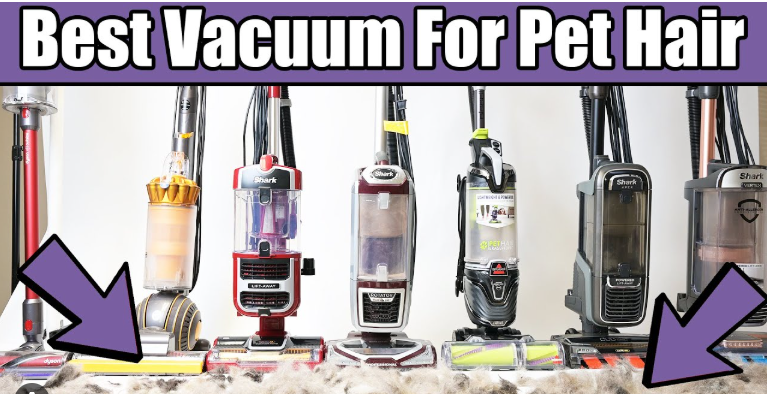Understanding how long do vacuum cleaners last is essential for making informed purchasing decisions and maximizing the value of your investment. The lifespan of a vacuum cleaner depends on factors like brand, model, usage frequency, and maintenance practices. In this detailed guide, we’ll explore the average lifespan of different vacuum types, factors affecting durability, and expert vacuum cleaner tips to extend their life. From vacuum cleaner setup to vacuum cleaner maintenance, we’ll help you keep your machine running efficiently for years.
Average Lifespan of Vacuum Cleaners
The longevity of a vacuum cleaner varies by type, brand, and care. Here’s a breakdown of typical lifespans based on expert insights and user experiences:
- Upright Vacuums: 5–8 years with regular use; premium models (e.g., Miele, Shark) can last 10–15 years with proper care.
- Stick/Cordless Vacuums: 3–6 years, limited by battery degradation; high-end models (e.g., Dyson) may last 8–10 years with battery replacements.
- Canister Vacuums: 10–20 years, especially durable brands like Miele or SEBO, known for robust motors.
- Robot Vacuums: 4–6 years; premium models (e.g., iRobot Roomba, Roborock) can last 7–10 years with proper maintenance.
- Handheld Vacuums: 2–5 years, due to smaller motors and frequent use for spot cleaning.
Note: These estimates assume regular use (1–2 times weekly) and proper vacuum cleaner maintenance. Heavy use or neglect can significantly shorten lifespan.
Factors Affecting How Long Vacuum Cleaners Last
Several factors influence the durability of your vacuum cleaner for everyday use. Understanding these can help you extend its life:
1. Brand and Build Quality
Impact: Premium brands like Dyson, Miele, and iRobot use high-quality materials and offer longer warranties (5–20 years), leading to extended lifespans. Budget models may use cheaper components, reducing durability.
Tip: Invest in a reputable brand for longevity. Check warranty details at purchase.
2. Usage Frequency and Intensity
Impact: Daily heavy use (e.g., in homes with pets or kids) wears out motors, belts, and batteries faster than occasional use.
Tip: Use eco modes for light cleaning to reduce strain, especially on cordless models.
3. Maintenance Practices
Impact: Neglecting vacuum cleaner maintenance—like failing to clean filters or empty dustbins—can strain the motor, leading to premature failure.
Tip: Follow a regular maintenance schedule (see below) to keep your vacuum in top shape.
4. Floor Types and Debris
Impact: Vacuuming abrasive debris (e.g., sand, gravel) or thick carpets can wear out brushes and motors faster. Delicate surfaces like hardwood require gentler settings to avoid damage.
Tip: Adjust suction and brush settings for each floor type to minimize wear.
5. Battery Life (Cordless and Robot Models)
Impact: Lithium-ion batteries in cordless and robot vacuums degrade after 500–1,000 charge cycles, typically 2–5 years.
Tip: Avoid fully draining batteries; replace them when performance drops significantly.

How to Extend the Life of Your Vacuum Cleaner
Proper care can significantly increase how long vacuum cleaners last. Follow these vacuum cleaner maintenance practices to maximize durability:
1. Regular Cleaning and Emptying
Action:
- Dustbin/Bags: Empty bagless bins after each use; replace bags when two-thirds full.
- Filters: Rinse washable filters monthly; replace non-washable ones every 6–12 months.
- Brushes: Remove hair and debris from brush rolls weekly to prevent tangles.
Benefit: Prevents motor strain and maintains suction, extending lifespan.
2. Proper Vacuum Cleaner Setup
Action:
- Follow the manual or app for correct vacuum cleaner setup.
- For robot vacuums, set up no-go zones and allow initial mapping runs.
- Charge cordless models fully before first use.
Benefit: Ensures optimal performance from the start, reducing wear.
Tip: Visit VacuumCleanerT for model-specific setup guides.
3. Use Correct Settings
Action:
- Adjust suction and brush height for floor types (low for hard floors, high for carpets).
- Use eco modes for light cleaning to reduce motor and battery stress.
- Avoid vacuuming large or sharp debris like coins or glass.
Benefit: Minimizes wear on components like motors and belts.
4. Inspect and Replace Parts
Action:
- Check belts, hoses, and attachments monthly for cracks or wear.
- Replace worn brush rolls, belts, or batteries as needed.
- For robots, clean sensors and wheels biweekly to ensure smooth operation.
Benefit: Prevents breakdowns and extends overall lifespan.
5. Store Properly
Action:
- Store in a cool, dry place to prevent motor or battery damage.
- Coil cords loosely to avoid kinks; keep attachments organized.
- For robots, ensure the dock is in an open, well-ventilated area.
Benefit: Protects components from environmental damage.
Vacuum Cleaner Troubleshooting for Longevity
Addressing issues promptly can prevent premature failure. Common vacuum cleaner troubleshooting tips:
- Weak Suction: Check for clogs in hoses, filters, or dustbins; clean or replace as needed.
- Loud Noises: Inspect for debris in the brush roll or loose parts; tighten screws or contact a technician.
- Battery Issues: Avoid full discharges; replace batteries after 2–3 years if performance drops.
- Robot Navigation Errors: Clean sensors and reset maps via the app.
Tip: For detailed vacuum cleaner troubleshooting, explore VacuumCleanerT.
Vacuum Cleaner Safety Tips for Durability
Ensuring vacuum cleaner safety protects both you and your machine:
- Unplug Before Maintenance: Disconnect corded vacuums before cleaning or inspecting parts.
- Avoid Overloading: Don’t vacuum heavy debris or liquids (unless designed for wet-dry use).
- Protect Batteries: Store cordless models away from extreme heat or cold.
- Robot Vacuums: Use boundary strips to prevent falls or collisions.

When to Replace Your Vacuum Cleaner
Knowing when to replace your vacuum can save time and money. Signs it’s time for a new one:
- Frequent Repairs: If repair costs exceed 50% of a new vacuum’s price, replacement is more economical.
- Poor Performance: Persistent weak suction or cleaning issues despite maintenance.
- Obsolete Parts: If replacement parts (e.g., batteries, filters) are no longer available.
- Motor Failure: Grinding noises or burning smells indicate motor issues, often not worth repairing in older models.
Tip: Premium brands like Miele offer warranties up to 20 years, making repairs more viable than replacements.
How Long Do Specific Brands Last?
Based on user reviews and expert tests (e.g., Consumer Reports, Wirecutter):
- Dyson: 5–10 years for cordless models; battery replacements can extend life.
- Miele: 15–20 years for canisters and uprights with proper care.
- iRobot Roomba: 5–10 years for robot models; regular sensor cleaning is key.
- Shark: 5–8 years for uprights and sticks; budget-friendly but durable with maintenance.
- Bissell: 3–7 years, depending on model and usage intensity.
Conclusion: Maximize How Long Your Vacuum Cleaner Lasts
The question of how long do vacuum cleaners last depends on quality, usage, and care. Upright and canister vacuums can last 5–20 years, while cordless and robot models typically endure 3–10 years with proper maintenance. By following our best vacuum cleaner guide, practicing regular vacuum cleaner maintenance, and using your vacuum correctly, you can significantly extend its lifespan. For more tips on how to use a vacuum cleaner, troubleshooting, and setup, visit VacuumCleanerT today.